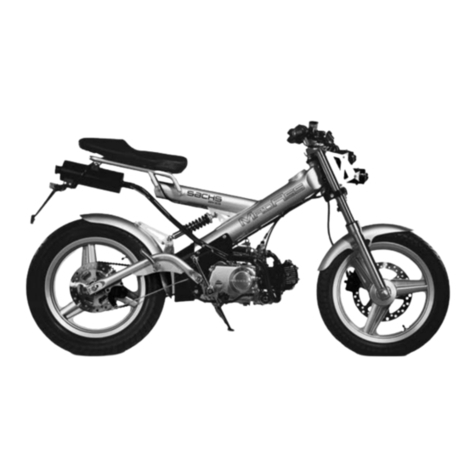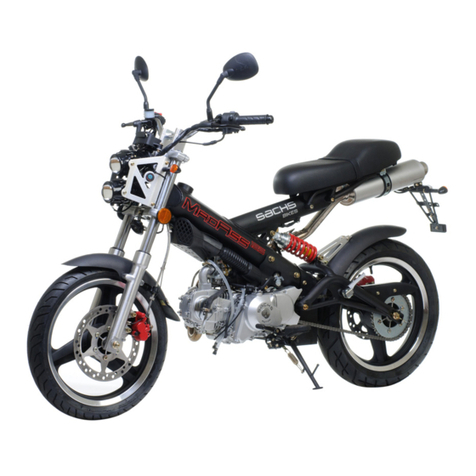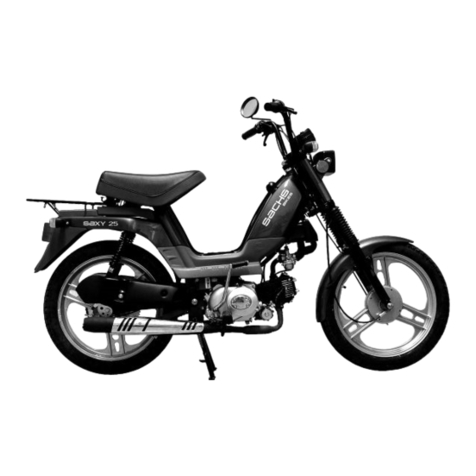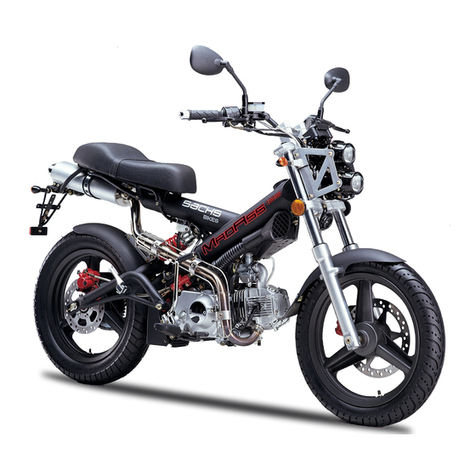Reprinting, reproduction and translation,
even of excerpts, without our express
consent is not permitted. All rights stipula-
ted in the copyright law remain expressly
reserved.
Technical changes to the standard motor-
cycles can cause the EC type approval to
become invalid. Therefore before imple-
menting a change, ask a specialized dealer
whether this is allowed.
We cannot be held liable for any conse-
quential damage caused by accessories
not approved by the factory.
The scope of delivery and version of the mo-
torbike is solely determined by the purchase
agreement concluded with the dealer.
This operating manual includes important
instructions for handling your light motor-
cycle. Read it carefully, because professi-
onal handling combined with regular care
and maintenance helps to maintain the
motorbike’s value and is one of the require-
ments for warranty claims.
We wish you at all times a safe journey.
Your
SACHS Fahrzeug- und Motorentechnik GmbH
You have purchased a Sachs X-Road
congratulations and thank you for
putting your trust in us.
The X-Road is a sturdy motorcycle in mo-
dern design.
Its sound construction, the meticulous
selection of materials, the advanced ma-
nufacturing techniques and conscientious
work of dedicated employees provides the
motorcycle with all the characteristics that
are typical of Sachs, such as economical
operation, quality, reliability and its lasting
value.
Sachs GmbH is continuously involved in
the further development of all types and
models. We therefore ask you for your kind
understanding that we reserve the right to
change the scope of delivery with respect
to appearance, equipment and technology.
No claims can thus be derived from the
data and descriptions contained in this
instruction manual.
PREFACE

































